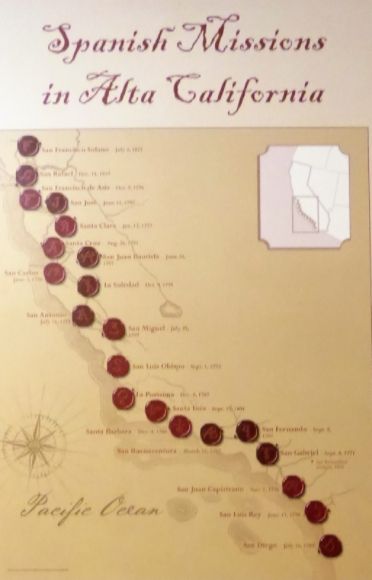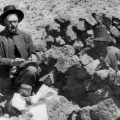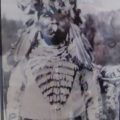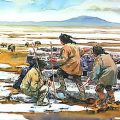In 1819, the Spanish missions in California were continuing their practice of enslaving Indians in order to convert them to Christianity. At this time, the Spanish had begun to congregate the Yokuts from the San Joaquin Valley at the San Juan Bautista Mission. Congregation involved resettling the Indians in the mission compounds so that they could be converted to Christianity and so they could work for the missionaries. While it is not uncommon for some textbooks to give the impression that the California Native Americans passively accepted the missions, Spanish domination, and conversion to Christianity, this was not the case. Indians often tried to escape from the brutality of their enslavement in the missions.
Background
In 1769 Father Junípero Serra led a group of Franciscan friars from Baja California to establish a series of 21 missions, starting with San Diego de Alcalá in the south. The group was accompanied by a column of Spanish soldiers under the leadership of Captain Gaspar de Portolá. In their book Indians, Franciscans, and Spanish Colonization: The Impact of the Mission System on California Indians, Robert Jackson and Edward Castillo report:
“The Franciscans attempted to restructure the native societies they encountered to further Spanish colonial-policy objectives.”
They also write:
“One of the primary objectives of the Franciscan-directed mission program in Alta California was the transformation of the culture and world view of the Indian converts congregated in the missions.”
Shown above is a map of the Spanish missions which is on display in the San Bernardino County Museum in Redlands, California.
Within the California missions, the Indians lived in a nonmarket economy in which they exchanged their labor for food, clothing, and housing. According to Robert Jackson and Edward Castillo:
“mission labor can be conceptualized as a form of tribute paid to the state and administered by the missionaries.”
In order to maintain discipline among their “converts”, the Spanish government gave the Franciscans the authority to administer corporal punishment and other measures. Robert Jackson and Edward Castillo report:
“The Franciscans, backed by a small number of soldiers stationed at the missions, imposed a rigid system of coerced and disciplined labor, enforced by the use of corporal punishment and other forms of control.”
This punishment including public flogging, and the use of the stocks and shackles. According to Robert Jackson:
“The public use of corporal punishment humiliated and physically injured the individual punished, and it did not always control the behavior that the missionaries found objectionable.”
In addition to using Indian labor for themselves, the Franciscans also provided Indian labor for both military garrisons and for individual Spanish colonists. Robert Jackson and Edward Castillo report:
“Access to mission Indians gave settlers additional labor at key points in the agricultural cycle, as well as for other uses, such as building construction.”
Death rates were chronically higher than birth rates among the Mission Indians and this meant that for the missions to maintain their Indian workforce they had to continually “recruit” from the outlying tribes.
The San Juan Bautista Mission was the fifteenth mission established. The Mission was established in 1797 and the Ohlone, the aboriginal inhabitants of the area, were congregated at the Mission, baptized, and put to work. Soon, the Spanish missionaries were looking to congregate, enslave, and convert other tribes in the area.
The War Against the Yokuts
In California, a war party of Spanish and their Indian allies under the leadership of José María Estudillo invaded the territory of the Wowol Yokuts in an attempt to recapture Indians who had run away from the Catholic missions. The Yokuts, understanding that the Spanish would kill all who resisted, fled to hiding places deep in the tule swamps.
While the Spanish found deserted villages, they did manage to capture two Yokuts. They assured the Yokuts that they wanted only to reclaim stolen horses and to return the “Christian” Indians to the mission. The party encountered some Western Mono who indicated that they were interested in trade.
Farther to the south, a second Spanish-Indian expedition under the leadership of Gabriel Moraga surprised a group of escaped “Christian” Indians in a canyon and captured nine of them. One of the Indians who escaped the Spanish walked for four days to warn the Yokuts.
To the north of the Yokuts, a third Spanish expedition attacked the Muquelemne Miwok, killing 27, wounding 20, and capturing 16.





Leave a Reply